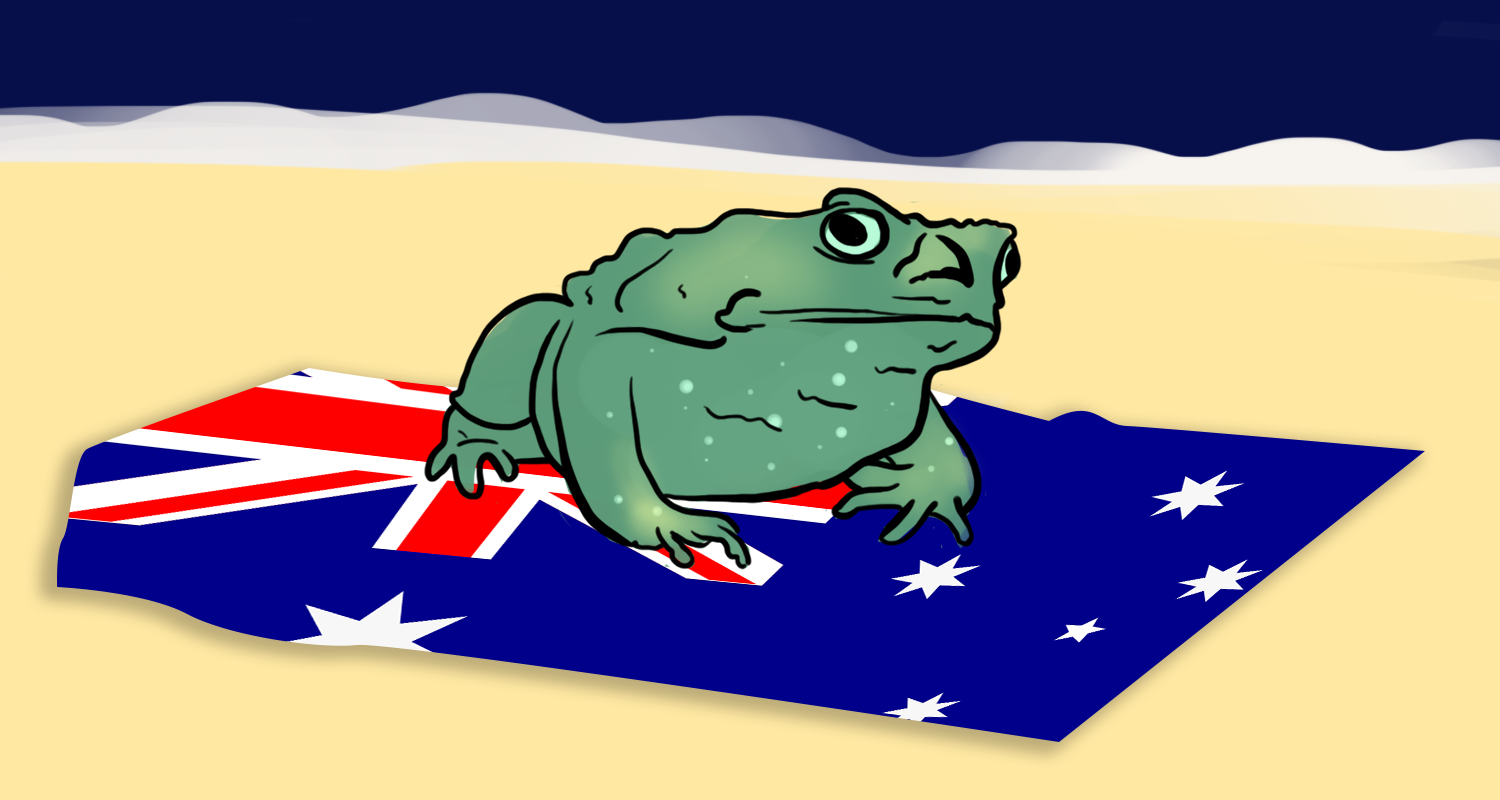The cane toads conquering Australia
In the tropical paradise of Queensland, sugarcane is grown in significant quantities. Thirty five million tonnes a year kind of quantities.
Heaps basically.
A percentage goes into making a potent local ‘fighting juice’ called Bundaberg rum. Or 'Bundy' as it's affectionately called. The rest is mostly exported overseas as refined sugar.
It’s value to farmers means that damage to the crops can have a big impact on the local economy.
In 1935, the wonderfully named ‘Bureau of Sugar Experiment Stations’ (now Sugar Research Australia) introduced cane toads (Bufo marinus) from South America in an attempt to control the cane beetle (Dermolepida albohirtum) which liked to nibble on the valuable produce.
This seemed, at the time, like a stroke of genius.
The toads would eat the beetles and the precious crops would be saved. Elegant in its simplicity wouldn't you say?
Except that didn’t happen.
What they had failed to take into account when introducing this new species was that there were no specific predators or diseases to control the cane toad population in Australia.
Not only are cane toads poisonous (leading to an influx of dogs being admitted to veterinary surgeons displaying symptoms of hallucinogenic poisoning) but they also breed like rabbits.
They quickly began to multiply and become a nuisance.
They became so abundant that many a person living in Queensland would report the grass in their gardens ‘moving’ at night.
It soon become something of a local sport to kill the toads. Preferred weapons included 'Big Bertha' golf drivers and cricket bats.
But they could not be killed fast enough and, as a result, there are now around 1.5 billion cane toads living in the land of sunshine and endless cold lager. They have long since spread from Queensland and are now a major nuisance in the Northern Territory and Western Australia.
It is regarded as an exemplary case of a feral species and highlights the challenge that in solving one problem it’s often easy to create a new and unintended one as a consequence.






